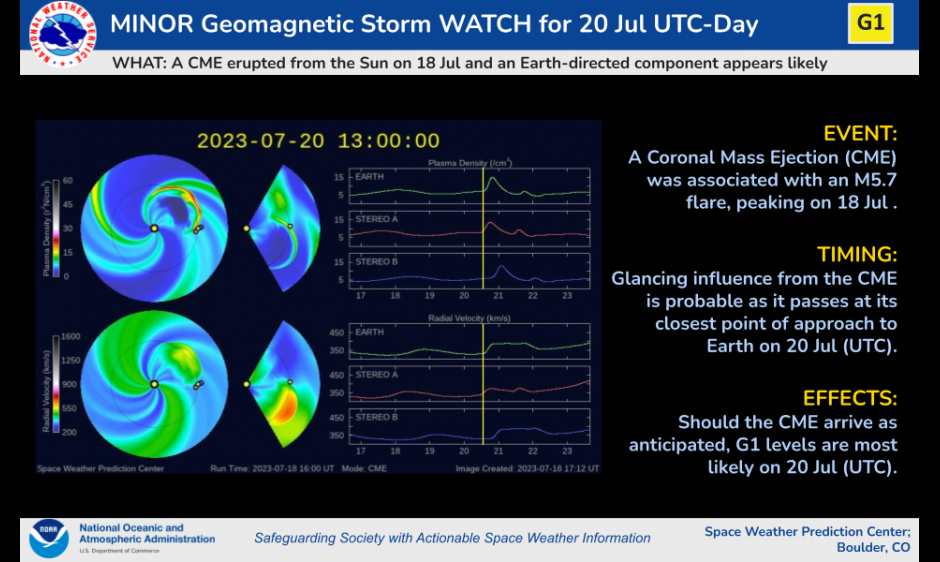
G1 (Minor) storms likely on 20 Jul with CME
AR 3363 produced an M5.7 flare, which peaked at 18/0006 UTC. An asymmetric, halo CME moving around 1200 km/s was associated with the flare. The bulk of the ejecta is directed ahead and south of Earth’s orbit, which is consistent with AR 3363’s region location on the WSW limb. Nonetheless, numerous model results show a wide and expansive CME front, which is likely to pass close enough to Earth on 20 July to cause minor (G1) geomagnetic storming. A G1 (Minor) geomagnetic storm watch is now in effect for 20 Jul.